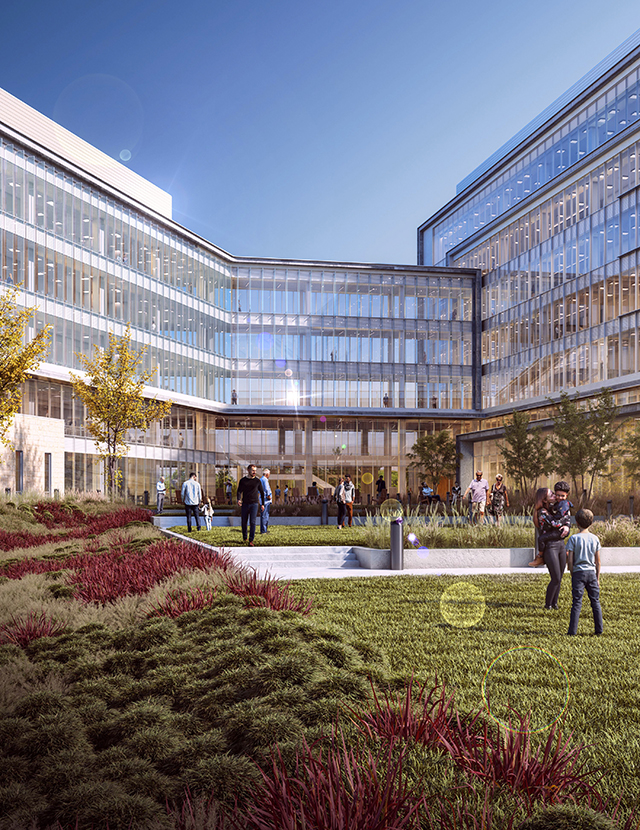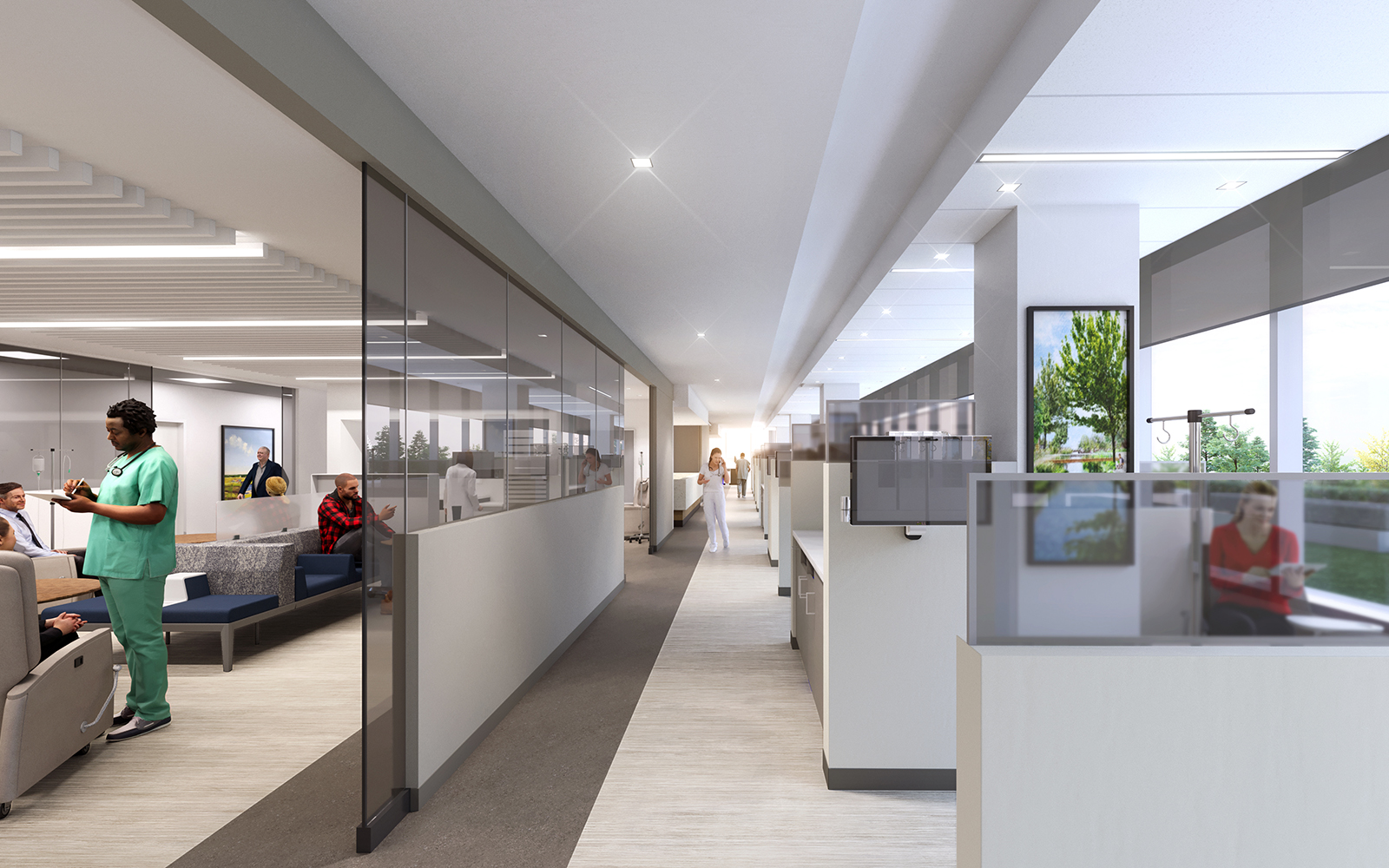|
Getting your Trinity Audio player ready...
|
The number 332 is written on Mike McKay’s board. It’s the number of total projects—either active, ideating, or wrapping up—that the director of planning, design, and construction at UW Health’s team of 32 is tasked with bringing to life.
The UW Health system cares for more than 700,000 patients a year, with over 80 clinic locations, and more than 17,000 employees. And McKay, a builder who knew he wanted to be an architect since age two, helps the organization expand its reach and provide best-in-class care, while also living a commitment to sustainable design and construction.

Service Above Self
“I’ve been on this path for as long as I can remember,” McKay explains. “I’ve been able to combine that passion with the leadership and service demonstrated by both my grandfather and father. They provided an amazing example for me growing up.”
The future builder’s grandfather acted as mayor of Wayne, Michigan, several times. Additionally, his father served as an active participant in his community’s Rotary club, whose “Service Above Self” motto sticks with McKay even to this day. The director’s gradual move into the leadership space has been reinforced heavily by a broader commitment to service that seems to be in the family genes.
While he may not be sketching blueprints anymore, McKay finds greater fulfillment in enabling his team at UW Health, building teams, and engaging with his internal clients and stakeholders to provide the very best for the healthcare organization’s practitioners and patients.
“I really enjoy putting teams together around projects, delivering those projects, and then interacting between the team, our senior leadership, and our board,” the director says. “Leadership for me is more about supporting others and enabling that common goal that it is about serving yourself. For me, it just has to be.”

Eastpark Rising
One of the director’s largest items on his list of 332 ongoing projects is the $270-million, seven-story clinic, to be located on Madison’s Far East Side. The clinic will serve as a one-stop location for patients seeking cardiology, dermatology, oncology, ophthalmology, and other specialty services.
The clinic also will act as UW Health’s third hub for specialty care in Madison, with two other locations on Madison’s Near West Side and Far West Side.

“A patient might have to see multiple specialists when they’re dealing with more acute types of diseases,” McKay explains. “With our hub model, we’re bringing multispecialty care into one facility with state-of-the-art technology in terms of delivering that care and treatment. A patient can come here and see everyone they need at one location.”
While a project of this magnitude is always years in the making, the Eastpark project timeline required a further extension due to COVID-19. The project was put on hold in 2020 after the pandemic found a way to stress every healthcare pain point to its max.
The director says that his team still found some significant silver lining in the delay.
“When we were allowed to reengage and restart the project, we now had lessons from the pandemic that could be applied to the design,” McKay explains. “We went back and included more negative pressure spaces to keep patients and providers safe. We incorporated more telehealth spaces, and we were really able to make some significant additions that we think will serve us well going forward. We found a way to make something positive out of this pandemic.”

A Sustainability Leader
At the time of the interview, McKay was getting ready to speak at a symposium on UW Health’s commitment to remaining a leader in sustainability in healthcare. The Eastpark project, in many ways, is a representation of UW’s sustainability journey.
The LEED-certified building will generate a considerable amount of its power onsite through the utilization of solar panels and other green energy generation.
“The University of Wisconsin is committed to reducing our carbon footprint, and those goals were embodied in the planning and design of this project,” McKay explains. “It’s been part of our progress toward becoming a net-zero organization.”
With nearly 40 other projects in conceptual planning, there’s no doubt that McKay’s teams continue to work toward their sustainability goal. It helps that McKay himself is the architect of record for the Rieth Village at Merry Lea Environmental Learning Center of Goshen College in Wolf Lake, Indiana, the very first LEED Platinum-certified green building project in Indiana.
There are over a dozen of additional projects the director can rattle off with what seems like encyclopedic recall: from an air base for med flight services to an employee entrance. Regardless of the scope, McKay always seems to be thinking of the end user. That means engaging stakeholders along the way and working hand-in-hand with those who will benefit from his team’s work. It’s not how McKay chooses to lead; it’s how he has to lead.


